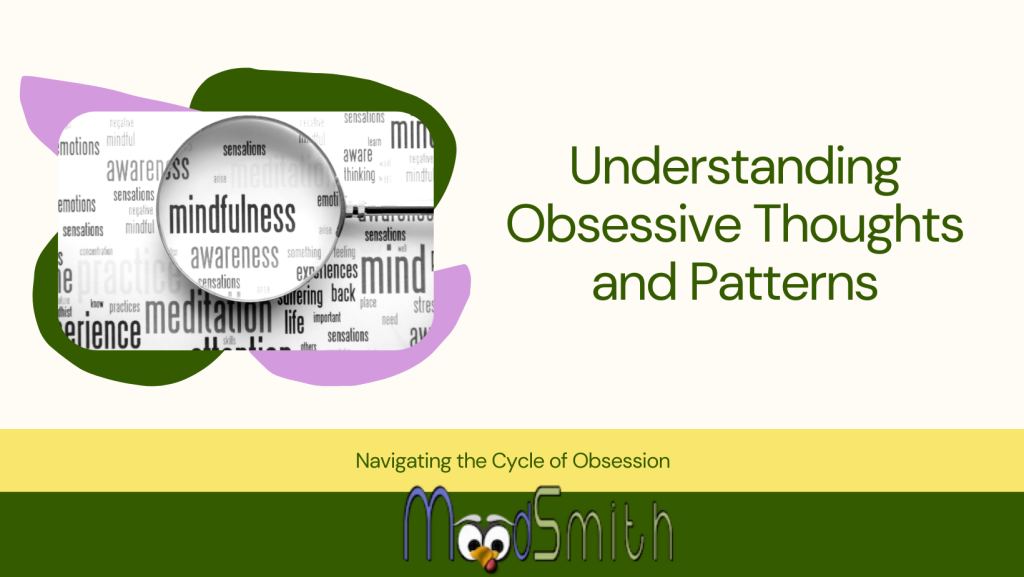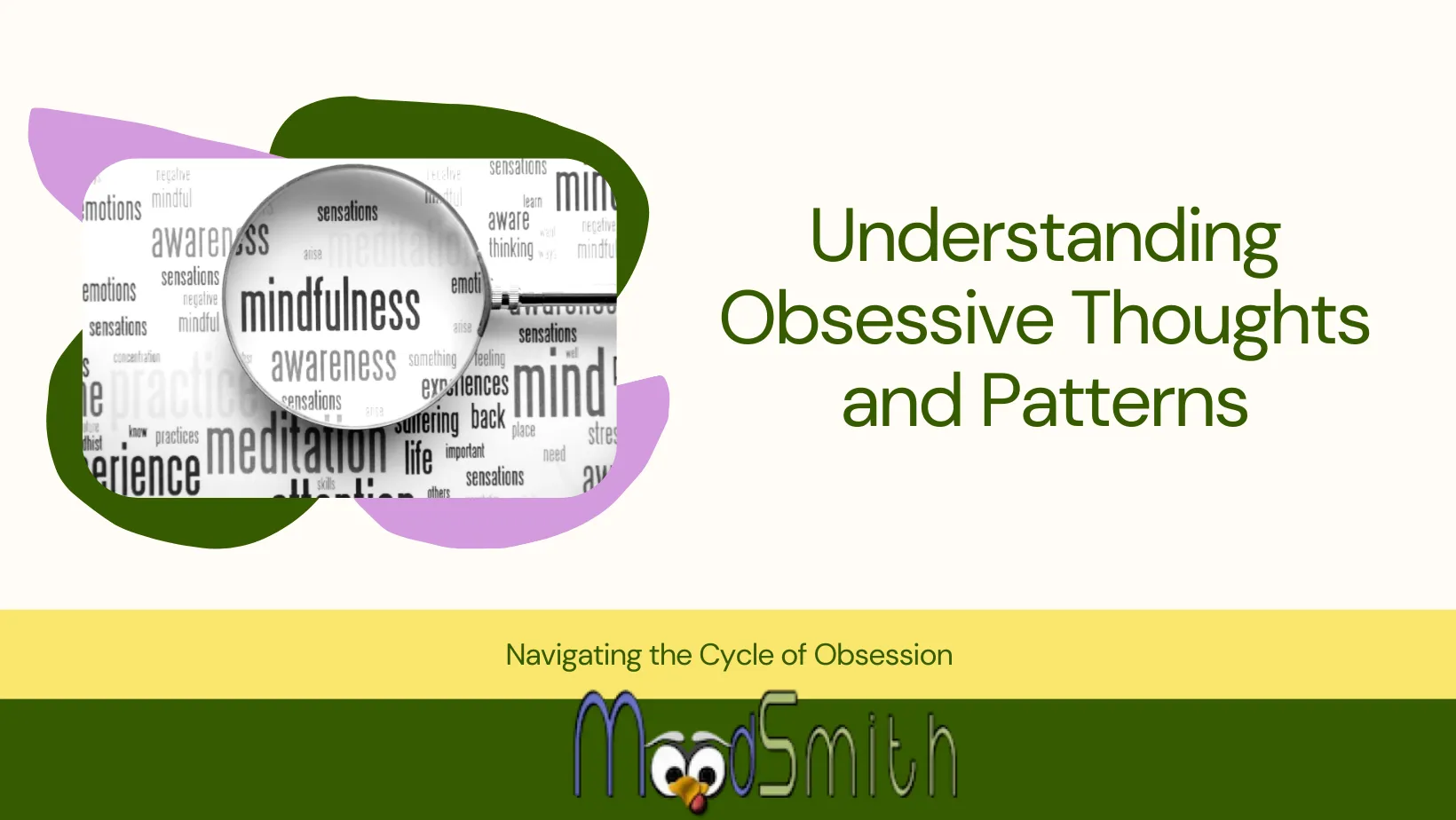I decided to write today’s article as there seemed little point in having material on how to help yourself with obsessive-compulsive disorder, OCD, if you are not able to recognise an obsessive thought. For most people, there are a series of steps to getting the help they need with OCD and if I list them backwards you shall see the importance of today’s post detailing examples of obsessive thoughts.

Stages to treatment
- Person getting treatment from a mental health professional
- Self- refer or referred by GP to psychologist or psychiatrist
- Person suspects they have OCD, Why? due to the nature of their thoughts and the compulsions that follow, but because obsessive thoughts are not as simple or well known as the classic ‘is that clean’ it is important to give examples of common obsessions as well as more obscure ones to make sure people get the help they need.
Key Points
- Obsessive thoughts stem from an overactive “error detection” system in the brain, leading individuals to perceive constant threats even without evidence.
- Common types of obsessive thoughts include those related to contamination, harm, religion/scrupulosity, perfectionism/order, and sexual themes.
- Examples of obsessive thoughts range from relatable concerns like repeatedly checking a locked door to more obscure fears like wearing specific colours causing bad luck.
- The document emphasizes the importance of seeking professional help from therapists specializing in OCD and anxiety disorders.
What Are Obsessive Thoughts?
Obsessive thoughts are repetitive, distressing thoughts that intrude into our minds, often without warning. They can revolve around fears, anxieties, doubts, or unsettling images, and they feel difficult—if not impossible—to shake.
A key difference between obsessive thoughts and regular worries is their persistence and irrationality. While a typical worry might be about a deadline or an upcoming event, obsessive thoughts can be wildly disconnected from reality yet still cause immense distress. For example, someone may be plagued by the thought that they will accidentally harm a loved one, even though there is no logical reason for this fear.
Obsessive thoughts are often driven by anxiety and cognitive distortions—irrational ways of thinking that exacerbate the perceived threat. In OCD, these thoughts stem from an overactive “error detection” system in the brain, causing the individual to constantly feel like something is wrong, even when there is no evidence to support that.
Example 1: A person might experience distressing, recurrent thoughts about the safety of their loved ones, imagining worst-case scenarios, despite knowing logically that their loved ones are safe.
Example 2: An individual might have an obsessive fear of leaving the stove on, causing them to check it multiple times, even though they clearly remember turning it off.
Types of Obsessive Thoughts
Obsessive thoughts tend to fall into specific categories. Below are some of the most common types.
- Contamination: Fears about germs, dirt, or environmental contaminants.
- Example: Feeling dirty even after multiple showers.
- Repeatedly sanitising hands after touching public surfaces, despite knowing the hands are clean.
- Obsessing over whether food in the grocery store has been contaminated.
- Harm: Fears of accidentally causing harm to oneself or others.
- Example: Recurrent thoughts of accidentally hurting a child while holding a sharp object.
- Religious/Scrupulosity: Overwhelming concerns about religious morality or fears of being sinful.
- Example: Persistent thoughts about having committed a sin and feeling the need to confess repeatedly, even when no wrong has been done.
- Perfectionism/Order: A need for things to be symmetrical, in order, or “just right.”
- Example: Intense anxiety when objects on a desk aren’t perfectly aligned.
- Sexual: Intrusive, unwanted sexual thoughts.
- Example: Fearing inappropriate sexual attraction to strangers, even when these thoughts are distressing and untrue.
Relatable and Obscure Examples of Obsessive Thoughts
Relatable Examples:
- Constantly worrying about whether the door is locked, leading to repetitive checking, even when the person knows it’s secure.
- Fear of having said something offensive in a conversation, causing endless rumination and unnecessary apologies.
Obscure Examples:
- An obsessive fear that wearing certain colours, like red, will lead to bad luck or social rejection. I worked with a client many years ago who suffered terribly with different types of obsessive thoughts, and most of her suffering was down to not recognising she had OCD. When she first came to see me, show recognised some form of OCD, such as the difficulty she had pushing her pram over certain cracks in the road, but the fear that she had done something terrible in the past and it happened while she was wearing the colour yellow, took several sessions to untangle her obsessive thoughts and get treatment started.
- Constantly fearing that you have unknowingly run someone over while driving, despite having no evidence to suggest this has happened.
Obsessive thoughts can also vary based on cultural context. For example, in the US, people might obsess over digital privacy, worrying excessively that their personal information will be leaked online. In the UK, someone might obsess about the weather, preparing excessively for unlikely disasters like extreme floods, even when forecasts show no such risk.
The Impact of Obsessive Thoughts
Obsessive thoughts can have a profound impact on an individual’s emotional and physical wellbeing. They often cause overwhelming feelings of anxiety, fear, guilt, and shame. The mental effort required to constantly manage these thoughts leads to mental exhaustion and fatigue.
For many people, obsessive thoughts interfere with daily life, relationships, and work. Simple tasks can become monumental challenges. A person might avoid social gatherings for fear of contamination, or repeatedly check and recheck tasks, such as locking a door, until it becomes a time-consuming ritual.
Case Example: A person who experiences obsessive thoughts about cleanliness may avoid public transport or social gatherings, fearing contamination. These thoughts become so overwhelming that they eventually restrict their ability to participate in normal social activities.
How to Manage and Treat Obsessive Thoughts
Managing obsessive thoughts often involves psychological therapies and, in some cases, medication.
- Cognitive Behavioural Therapy (CBT): CBT, particularly a form known as Exposure and Response Prevention (ERP), is highly effective in treating obsessive thoughts. In ERP, individuals are gradually exposed to their fears in a controlled manner, while resisting the urge to engage in compulsive behaviours. Over time, this reduces the power of the obsessive thoughts.Example: A person who fears contamination might be asked to touch a public surface and then refrain from washing their hands immediately. Over time, they learn that the anxiety subsides without performing the compulsive action. You can read more on CBT and how it helps with obsessive thoughts here.
- Medication: Selective serotonin reuptake inhibitors (SSRIs) are often prescribed to help manage the anxiety associated with obsessive thoughts. These medications can help regulate the chemical imbalances in the brain that contribute to OCD.
- Mindfulness and Acceptance-Based Therapies: Learning to accept that thoughts are just thoughts—without giving them power—can be a useful strategy. Mindfulness techniques can help individuals observe their thoughts without reacting to them emotionally.
Getting Help for Obsessive Thoughts
It’s important for anyone struggling with obsessive thoughts to seek professional help. Therapists and psychologists who specialise in OCD and anxiety disorders can provide evidence-based treatments that are proven to help.
- In the US, organisations like the International OCD Foundation (IOCDF) provide resources and guidance on finding licensed therapists trained in ERP and CBT.
- In the UK, organisations such as OCD-UK offer support, including information on NHS services for OCD treatment.
Conclusion
Obsessive thoughts can feel overwhelming and disruptive, but they are not impossible to manage. Understanding the nature of these thoughts and recognising that help is available are key steps toward reclaiming your life. With the right treatment, whether through therapy, medication, or a combination of both, it is possible to reduce the frequency and intensity of obsessive thoughts.

